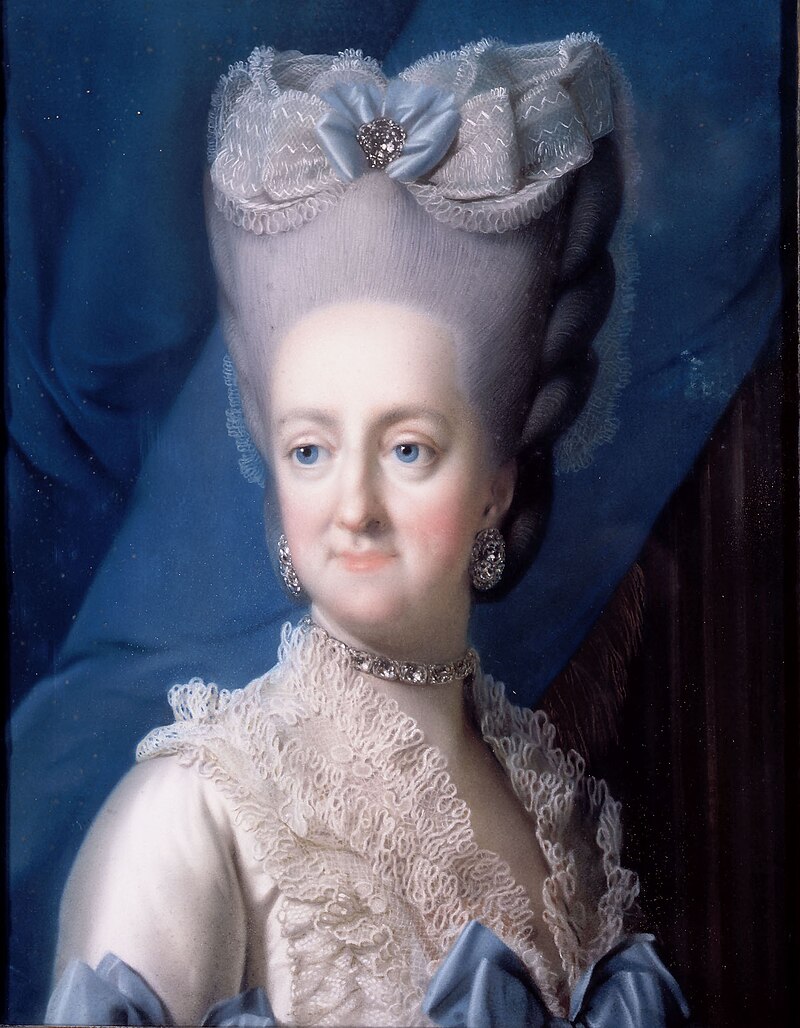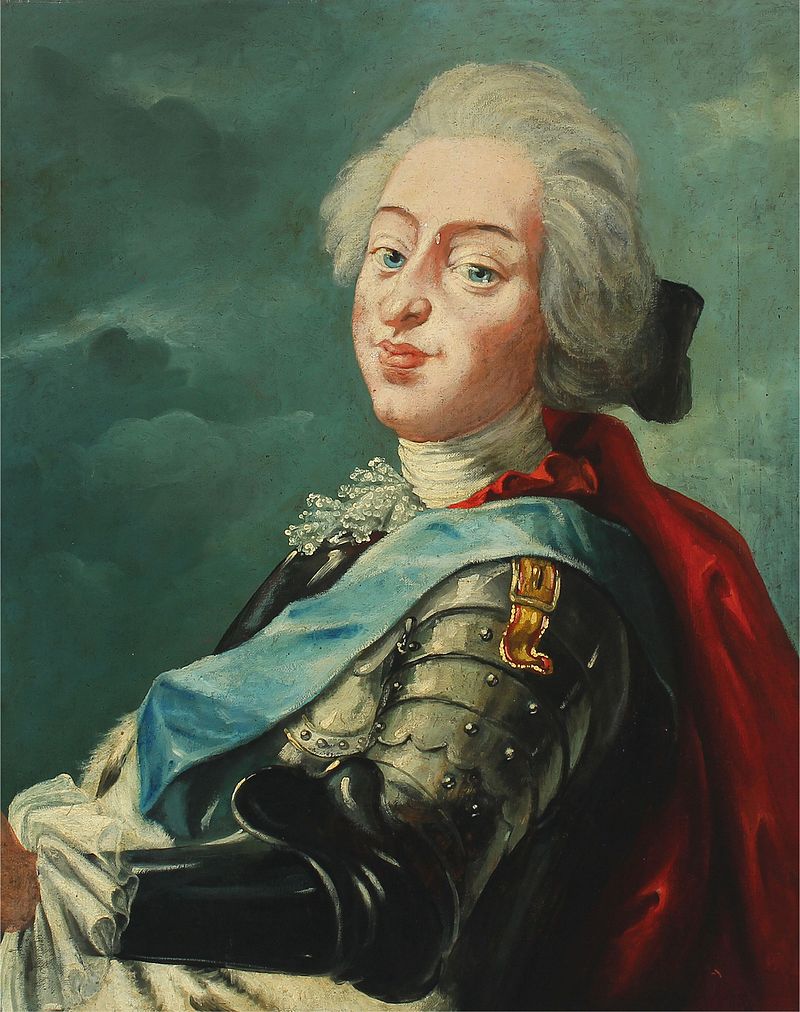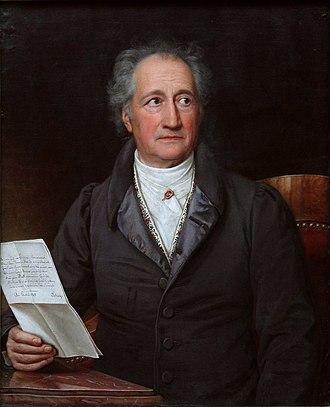by Susan Flantzer © Unofficial Royalty 2017

Juliana Maria of Brunswick-Wolfenbüttel, Queen of Denmark and Norway; Credit – Wikipedia
Born on September 4, 1729, Juliana Maria of Brunswick-Wolfenbüttel was the youngest of the six daughters and the eleventh of the thirteen children of Ferdinand Albert II, Duke of Brunswick-Wolfenbüttel and Antoinette of Brunswick-Wolfenbüttel. Juliana Maria and her siblings were first cousins of Archduchess Maria Theresa of Austria, Queen of Hungary and Bohemia and brothers-in-law/sisters-in-law of King Friedrich (the Great) II of Prussia.
Juliana Maria had twelve siblings:
- Karl I, Duke of Brunswick-Wolfenbüttel (1713 – 1780) married Princess Philippine Charlotte of Prussia, daughter of King Friedrich Wilhelm I of Prussia, had five sons and four daughters
- Anton Ulrich of Brunswick-Wolfenbüttel (1714 – 1774) married Grand Duchess Anna Leopoldovna of Russia and had three sons and two daughters, including the infant Ivan VI, Emperor of All; of Russia; Note: The infant Tsar Ivan VI was overthrown by Empress Elizabeth Petrovna (daughter of Peter the Great). Ivan and his parents were imprisoned and spent the rest of their lives in captivity. After more than twenty years as a prisoner, Ivan was killed by his guards. His surviving siblings, who had been born in prison, were then released into the custody of their paternal aunt Juliana Maria, Queen of Denmark.
- Elisabeth Christine of Brunswick-Wolfenbüttel (1715 – 1797) married King Friedrich II of Prussia (the Great), no children
- Ludwig Ernest of Brunswick-Wolfenbüttel (1718 – 1788), unmarried
- Ferdinand of Brunswick-Wolfenbüttel (1721 – 1792), unmarried
- Luise of Brunswick-Wolfenbüttel (1722 – 1780) married Prince Augustus Wilhelm of Prussia, had three sons and one daughter including King Friedrich Wilhelm II of Prussia
- Sophie Antoinette of Brunswick-Wolfenbüttel (1724 – 1802) married Ernst Friedrich, Duke of Saxe-Coburg-Saalfeld, had five sons and two daughters including Franz Friedrich, Duke of Saxe-Coburg-Saalfeld who was the father of King Leopold I of Belgium and the grandfather of Queen Victoria of the United Kingdom and her husband Prince Albert
- Albert of Brunswick-Wolfenbüttel (1725 – 1745), unmarried
- Charlotte of Brunswick-Wolfenbüttel (1725 – 1766), unmarried
- Theresa Natalie of Brunswick-Wolfenbüttel (1728 – 1778), unmarried, Princess-Abbess of the Imperial Free Secular Abbey of Gandersheim
- Friedrich Wilhelm of Brunswick-Wolfenbüttel (1731 – 1732), died in infancy
- Friedrich Franz of Brunswick-Wolfenbüttel (1732 – 1758), unmarried, died at the Battle of Hochkirch
Juliana Maria’s father died when she was six-years-old, having had only a six-month reign as Duke of Brunswick-Wolfenbüttel. The House of Brunswick-Wolfenbüttel was one of the smaller German princely families and Juliana Maria had a simple, strict upbringing.

Juliana Maria of Brunswick-Wolfenbüttel; Credit – Wikipedia
On December 19, 1751, Louisa of Great Britain, the wife of King Frederik V of Denmark and Norway died while pregnant with her sixth child. Despite having parents with very strict religious beliefs, Frederik V had a very sensual nature and loved wine and women. He spent so much time visiting Copenhagen’s taverns and brothels that his father King Christian VI considered disinheriting him from the throne. When Frederik’s marriage to the youngest daughter of King George II of Great Britain was proposed, the Danish government hoped (incorrectly) that marriage would put a damper on Frederik’s affairs and drunkenness.
However, that strategy did not work as during the early years of his marriage to Louisa, Frederik had an affair with Else Hansen, known as Madame Hansen and they had five children. After Frederik became king in 1746, he took part in the government by attending council meetings, but he was afflicted with alcoholism and most of his reign was dominated by very able ministers such as Count Adam Gottlob Moltke, Count Johann Hartwig Ernst von Bernstorff, and Heinrich Carl von Schimmelmann.

King Frederik V of Denmark; Credit – Wikipedia
Count Moltke thought it would be a good idea if Frederik married again as soon as possible in hopes of stabilizing his behavior. Frederik preferred another British wife, but there was no British princess at an appropriate age. Count Moltke drew Frederik’s attention to Juliana Maria. Her portrait was sent to Denmark and it pleased Frederik. 29-year-old Frederik and 22-year-old Juliana Maria were married at Frederiksborg Palace on July 8, 1752. However, many Danish people felt the marriage occurred too quickly after the death of the beloved Queen Louisa.
The couple had one child:

Hereditary Prince Frederik by Vigilius Eriksen, 1777; Credit – Wikipedia
Her marriage to Frederik V also brought Juliana Maria four stepchildren, but she had no influence in their upbringing:
Despite her efforts, Juliana Maria found it difficult to replace Queen Louisa in the hearts of the Danish people. While Louisa had learned Danish and had insisted that her children learn Danish, a rarity in an almost German-language Danish court, Juliana Maria never fully mastered the Danish language but she did try to speak and write it. She appointed Danish tutors for her son so that he could master Danish. King Frederik V continued his affairs and his drinking and as Louisa had done, Juliana Maria pretended not to notice the problems. Juliana Maria led a quiet life and had no influence in government affairs despite the expectation of her brother-in-law King Friedrich II (the Great) of Prussia that she act as his agent.
In 1760, King Frederik V broke his leg in a drunken accident, affecting his health for the rest of his life. Frederik V died on January 14, 1766, at Christiansborg Palace in Copenhagen, Denmark at the age of 42. He was buried at Roskilde Cathedral in the Frederik V Chapel.
Frederik V was succeeded by his 17-year-old son from his first marriage, King Christian VII. Christian had been only two-years-old when his mother died. He had a nervous disposition and had been poorly educated and terrorized by a brutal governor, Christian Ditlev Reventlow, Count of Reventlow. A few months after he became king, Christian married his first cousin Princess Caroline Matilda of Wales, the daughter of Frederick, Prince of Wales (who predeceased his father King George II) and the sister of King George III.
It was soon clear that Christian VII was not quite normal. He publicly declared that he could not love Caroline Matilda because it was “unfashionable to love one’s wife”. His symptoms included paranoia, self-mutilation, and hallucinations. Christian wandered the streets of Copenhagen visiting the city’s taverns and brothels. It became clearer and clearer that Christian could not fulfill his role as king. During a trip that had been arranged because it was believed that new environments could change Christian’s behavior, Christian became acquainted with the physician Johann Friedrich Struensee. Struensee was the first person who understood that Christian was seriously ill. When Christian came home from the trip, Struensee accompanied him and was employed as Christian’s personal physician. Struensee could handle Christian’s instability, which was a great relief to the king’s advisers, and Christian developed confidence in him.

King Christian VII; Credit – Wikipedia
Because of Christian’s confidence in him, Struensee gained political power. In 1770, Struensee became Master of Requests and Minister of the Royal Cabinet. He also became the lover of the ill-treated Caroline Matilda, whose marriage was less than satisfactory. When Caroline Matilda gave birth to her daughter Louise, no one doubted that Struensee was the father of the princess. Eventually, Queen Dowager Juliana Maria maneuvered a coup that would bring about the fall of Struensee and discredit Caroline Matilda. Juliana Maria arranged for King Christian VII to sign the arrest warrant of Struensee after she had already made the arrest in the name of the king. In 1772, Struensee was executed and Caroline Matilda was exiled.
After the fall of Struensee, Juliana Maria and her son Christian VII’s half-brother Hereditary Prince Frederik took charge of the Council of State. Christian VII was only nominally king from 1772 onward. Between 1772 and 1784, Denmark was ruled by Queen Dowager Juliana Maria, Hereditary Prince Frederik, and Cabinet Secretary Ove Høegh-Guldberg. Juliana Maria was given the responsibility of the upbringing of Christian VII’s eldest son Crown Prince Frederik, the future King Frederik VI. From 1784, Crown Prince Frederik ruled permanently as a prince regent. Crown Prince Frederik had no intention of allowing Juliana Maria and her son Frederik to continue their rule. He somehow managed to get his insane father to sign an order dismissing the supporters of Juliana Maria from the council and declaring that no royal order was legal unless co-signed by the Crown Prince, thereby deposing Queen Dowager Juliana Maria and Hereditary Prince Frederik.

Juliana Maria showing the portrait of her only child Hereditary Prince Frederik by Johann Georg Ziesenis, 1766-1767; Credit – Wikipedia
Juliana Maria lived the rest of her life quietly at court. She survived her husband by 30 years, dying on October 10, 1796, at Fredensborg Palace at the age of 67 and was buried at Roskilde Cathedral in the Frederik V Chapel.

Tomb of Juliana Maria of Brunswick-Wolfenbüttel – Photo by Susan Flantzer
This article is the intellectual property of Unofficial Royalty and is NOT TO BE COPIED, EDITED, OR POSTED IN ANY FORM ON ANOTHER WEBSITE under any circumstances. It is permissible to use a link that directs to Unofficial Royalty.
Kingdom of Denmark Resources at Unofficial Royalty
Works Cited
- Da.wikipedia.org. (2017). Juliane Marie af Braunschweig-Wolfenbüttel. [online] Available at: https://da.wikipedia.org/wiki/Juliane_Marie_af_Braunschweig-Wolfenb%C3%BCttel [Accessed 7 Aug. 2017].
- En.wikipedia.org. (2017). Juliana Maria of Brunswick-Wolfenbüttel. [online] Available at: https://en.wikipedia.org/wiki/Juliana_Maria_of_Brunswick-Wolfenb%C3%BCttel [Accessed 7 Aug. 2017].
- Unofficial Royalty. (2017). King Christian VII of Denmark. [online] Available at: https://www.unofficialroyalty.com/king-christian-vii-of-denmark/ [Accessed 7 Aug. 2017].
- Unofficial Royalty. (2017). King Frederik V of Denmark. [online] Available at: https://www.unofficialroyalty.com/king-frederik-v-of-denmark/ [Accessed 7 Aug. 2017].























